A few weeks ago, with the beginning of the school year and, thus, the end of summer fast approaching, Tibi and I decided we wanted/desperately needed one last get-away before the maelstrom that comes with the end of August. This time, rather than spending some Skymiles, we decided to take advantage of our trusty Prius, Little Red Riding Hood, and drive north to a place we’ve always wanted to visit: Quebec City.
I’d always heard that Quebec City felt more European than Canadian, and I was curious to see how true this was. As we approached the city on a gorgeous drive along the St. Lawrence River, it seemed like a prime setting for a magical place. But as we reached the city limits, the buildings only seemed European in the sense that they bore a striking resemblence to the horrific architecture of Thatcher-era Britain. “When is it going to get pretty,” I asked Tibi, with worry.
Alas, as we crossed the boundary into the historic center, more suddenly then I could possibly imagine, the city transformed. There was no transition. From one street to the next, we were suddenly in this wonderland of stone buildings that immediately evoked the beautiful small towns of France. It turns out that this stark divide between the new and old city is clear no matter which direction you’re coming from, as we would soon find out. Outside the old city: depressing and characterless, with all the pretty stuff demolished and replaced with ‘60s- and ‘70s-era monstrosities. Within the old city: Disneyland.
We stayed at the Auberge Saint Antoine, which was centrally located in the lower part of the historic city center. It had nice rooms and served as a perfect base for exploring the city. Walking around, at times the city did feel more like something out of Epcot’s World Showcase than an actual living, breathing city. The historic center is a UNESCO World Heritage Site, and it is kept sparklingly clean in a way that few actual European cities are. This, despite the hoards of tourists who, I suppose, had the same idea Tibi and I did to fit in one last summer getaway. There were travelers from every corner of the globe: North America, Europe, Asia, the Middle East. I had no idea that Quebec City had made it on to so many tourist agendas, though its beauty certainly warrants it. But the number of tourists made it really difficult to get a table for lunch or dinner without a reservation, which led to our eating some less than exciting meals when we couldn’t nab a last-minute table.
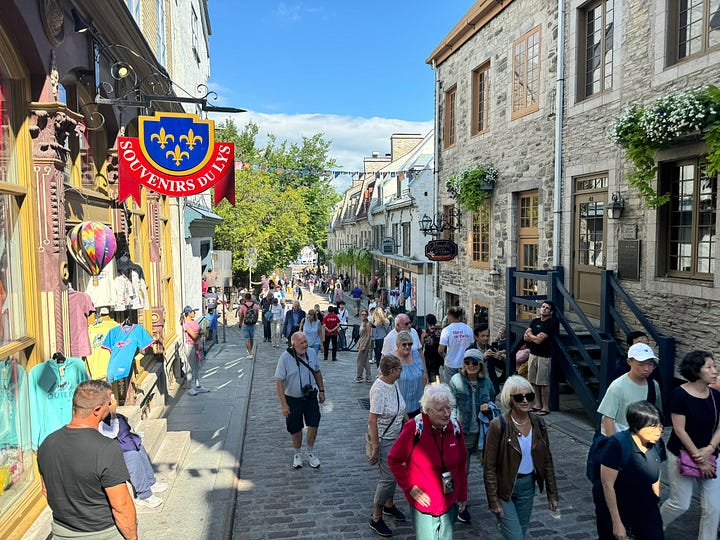
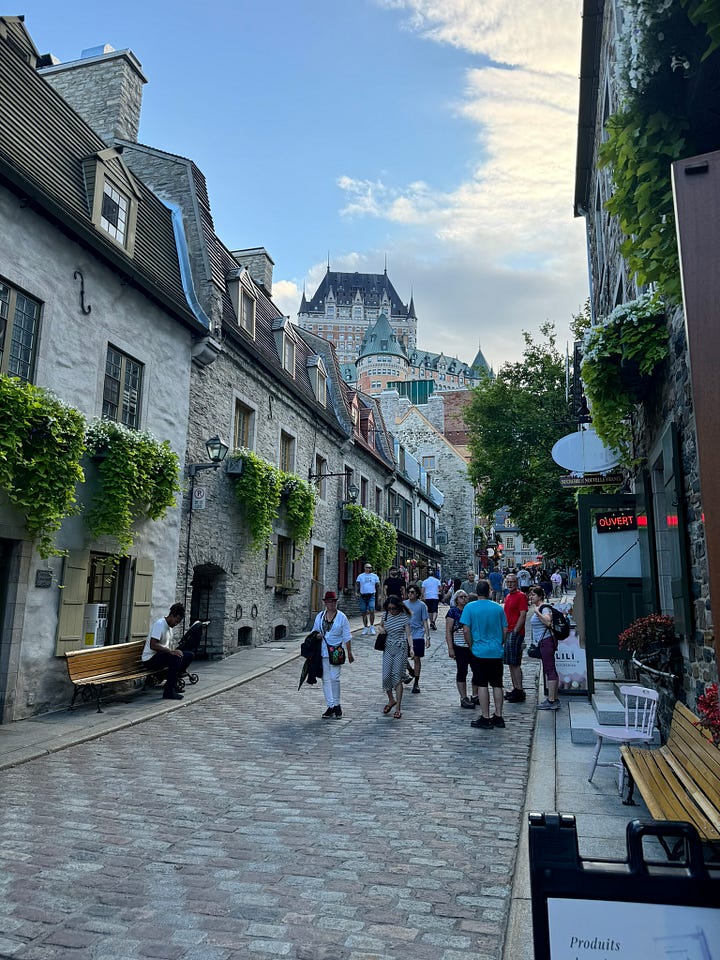
While the food scene in Quebec may be the one major aspect of the city that does not resemble France, we still managed to have some really memorable meals and experience some beautiful moments exploring this remarkable city.
Towering over the historic center of Quebec City is the Château Frontenac, a spectacular hotel that populates many a photo taken by visitors to the city. We passed by one guide telling a group of tourists that it is, according to the hotel’s website, the most photographed building in the world. I find this pretty hard to believe. Is it really more photographed than the Eiffel Tower or the Taj Mahal? Still, it is stunning, and it certianly made it into my camera roll more than a handful of times.
Better yet, the hotel is home to our favorite bar that we found in Quebec City, the 1608 Bar. There was usually a wait to be seated, but it never lasted more than 15 minutes or so, and it was worth it to sit in this elegant lounge and drink the well-made cocktails or something from their vast wine cellar. We visited almost every day, either before or after dinner, feeling very much like characters in the Great Gatsby as we sipped our French 75s and Manhattans.
Our happiest moments in Quebec City were those spent wandering through the streets, admiring the architecture. The old stone buildings, complete with manicured flower boxes and pale painted roofs and shutters made each street more picturesque than the last. The city is built on a steep hill, so walking from the lower town to the upper town takes some real effort. There is a short funicular, which we took once, but with a cost of $5 for the 30 second ride, hiking up the hillside became the only sensible way around. From the waterside below to the old citadel that caps the hill, however, every stroll through the city was a joy.
One day, based on the recommendations of several people we met on the trip, we booked a day excursion to the nearby Île d'Orléans, a large island in the middle of the St. Lawrence River, just about 15 minutes from Quebec City. We were told of the many vineyards and winemakers on the island, so we thought it would be fun to taste some local wines. The island was indeed beautiful. The wines, on the other hand…
First off, most of the wines we tasted were not made from grapes at all, but from apples and pears. The apple wines—let’s just call them ciders, shall we?—were not bad at all, especially when you stopped thinking of them as wines. The grape wines we did taste were pretty terrible. Acidic and funky, with a distinct odor of dirty socks. But we got to sip them while sitting in the middle of an idyllic orchard, and that wasn’t half bad. The best thing we had during our island visit was not the wine, but the ice cream dipped in milk chocolate and salted caramel at the Chocolaterie de l'Île d'Orléans, which was, in itself, worth the visit to the island.
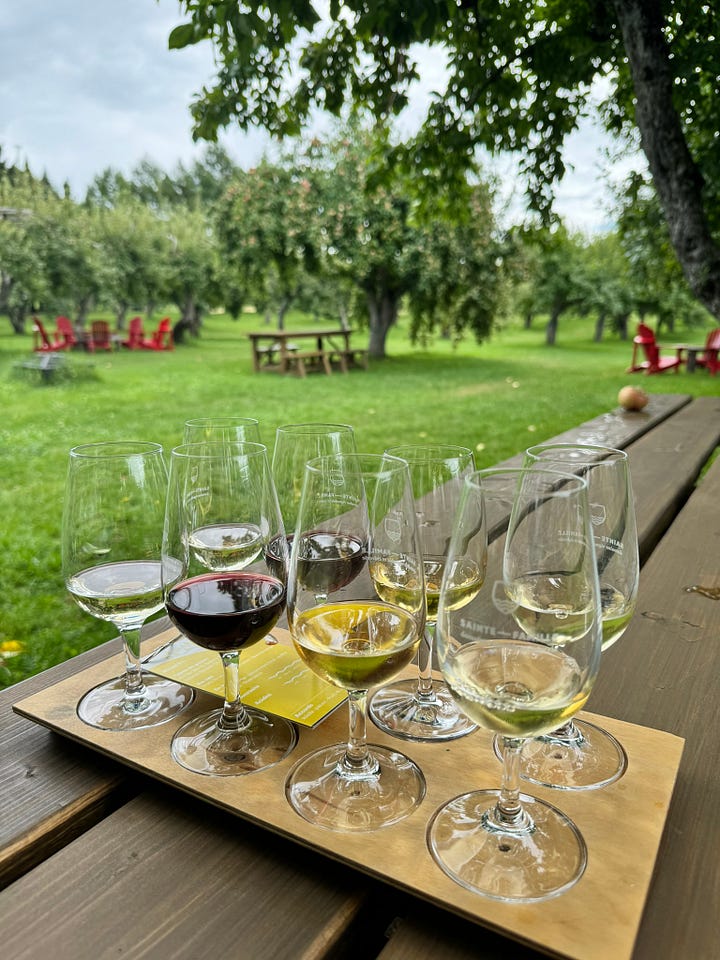
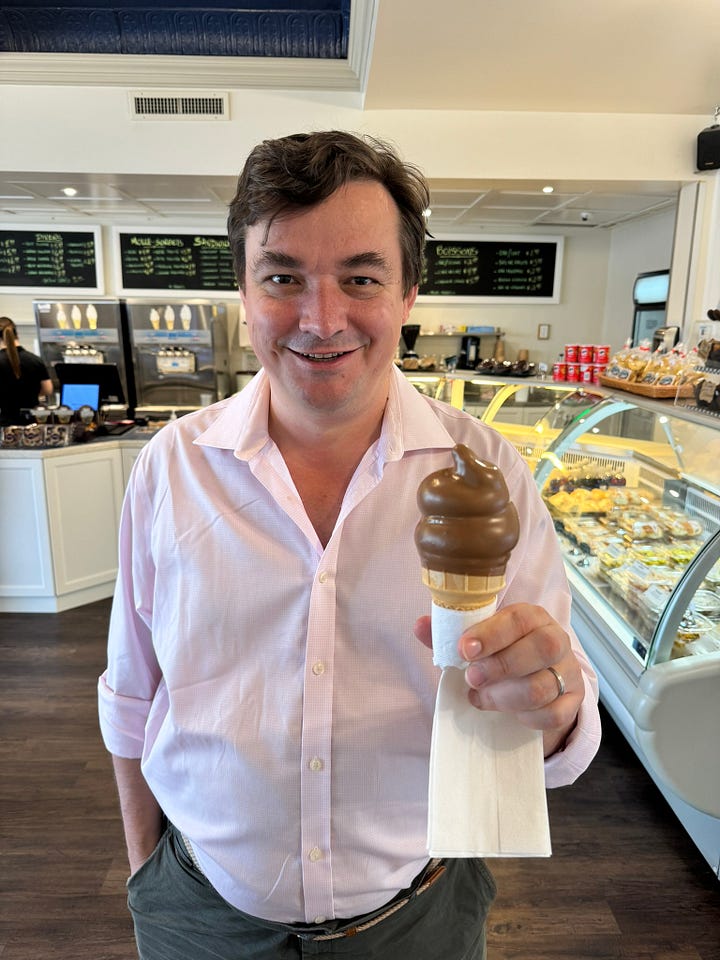
We had our fair share of mediocre meals in Quebec City. I mean, the poutine was typically yummy, but you can’t possibly eat fries with cheese curds and gravy for every meal. That said, we also had some lovely food experiences. Chez Rioux et Pettigrew was one of our favorite dinners. This beautiful restaurant is housed in a nineteenth-century grocery of the same name, and they’ve opted to keep the shabby chic vibe, pulling it off exceptionally well. We opted for a pretty great four-course tasting menu, which was only $85 CAD (about $63 USD) per person. The food was good, if underseasoned. But we also got the wine pairing, and every wine they served was surprising and delectible. (Unsurprisingly, the wine was not local.) This, on top of the friendly service, made for an amazing dinner.
One night, we ventured out of the historic center to eat at Le Renard et La Chouette, which is a true neighborhood place. It’s nothing to look at. The neighborhood is run down, and when you first walk into the place, it’s hard to tell if you accidently stepped into a restaurant, a NYC-style bodega, or a wine shop. But we were turned around in an instant when the waiter pointed us in the direction of the freshly baked bread and house-churned fermented butter, both of which were self serve. If I were able, I would write poetry about this butter. Forget the Grecian urn, Mr. Keats: this butter deserves an ode. But we also had some other great food here, including wood-fired, Alsatian-style flatbread; some deliciously spiced flavor bombs called Bahji; and some delectible whelks drowned in butter and garlic. All this with a fun and unconventional wine list made for a fantastically surprising dinner.
Le Lapin Sauté was the restaurant that was most similar to the French-style bistros we were expecting to find all over Quebec City, but were shockingly absent. There, you could munch on rabbit poutine and a perfectly acceptable cassoulet, complete with rabbit sausage and confit duck leg, all while sitting in an old stone building and sipping a lovely, dry rosé from Provence.
But the most Canadian of restaurants we went to—in the truest sense of the word—was Sagamité, an Indigenous restaurant owned and operated by the Huron-Wendat First Nation of Canada. Food here focused on featuring the “three sisters” that are common across many Indigenous peoples of North America—corn, beans, and squash. But the main course included local game—venison and elk—served on a hanging hot stone and flambéed in the center of your table.
We learned about Sagamité from a Wendate street artist named Judith Faber, who we met one day while strolling down an art-filled alley in the upper town. We were enamored by Judith’s ceramics, and she generously shared with us the stories and symbols behind each of the animals featured on her plates and ceramic-ware. One of the plates featured a hummingbird, and Judith shared with us its legend. According to the Wendate, in the past a massive fire began to overtake the forest. All the forest animals ran, trying to escape the fire. All except for the hummingbird, who instead went to the river and started collecting water in an effort to, drop by drop, extinguish the blaze. When the hummingbird succeeded in doing so, he became known as the “stopper of time.” As two people who often feel like we’re trying to put out a massive fire with just drops of water, Tibi and I loved this story, and so we took the hummingbird home with us.
Some things about Quebec City are just weird, though delightfully so. It is definitely not France. The food was reliably underseasoned everywhere we went, and there is a remarkable lack of bistros, cafés, and wine bars, which litter the streets of most French cities and towns. We found one cocktail bar, Vieux Carré, that is beautiful and well located, but that insists on using only local ingredients in the cocktails, which means no citrus fruits. Tibi got a French 75 with sour grape juice instead of lemon juice and it was…not good.
We had a fun time exploring the Musuem of Civilization, which, despite its problematic name, does an interesting job of exploring the history of Quebec in a way that at once celebrates diversity and French Canadian nationalism.
And Quebecois French is really something to marvel at. My French is pretty elementary, though I can generally order a meal in French with no problem at all. Tibi is fluent, however, thanks to his Walloon family in Belgium, but even he struggled to understand what was being said much of the time.
All in all, however, Quebec City was exactly what we needed. It felt like a total escape to a fairy tale city without even having to get on a plane. The city is pristine and beautiful, and I imagine it may be even moreso in the winter, for those who can suffer the bitter cold. I love now knowing that this magical place is just a car ride away, and I imagine we’ll take advantage of that fact in the years to come.




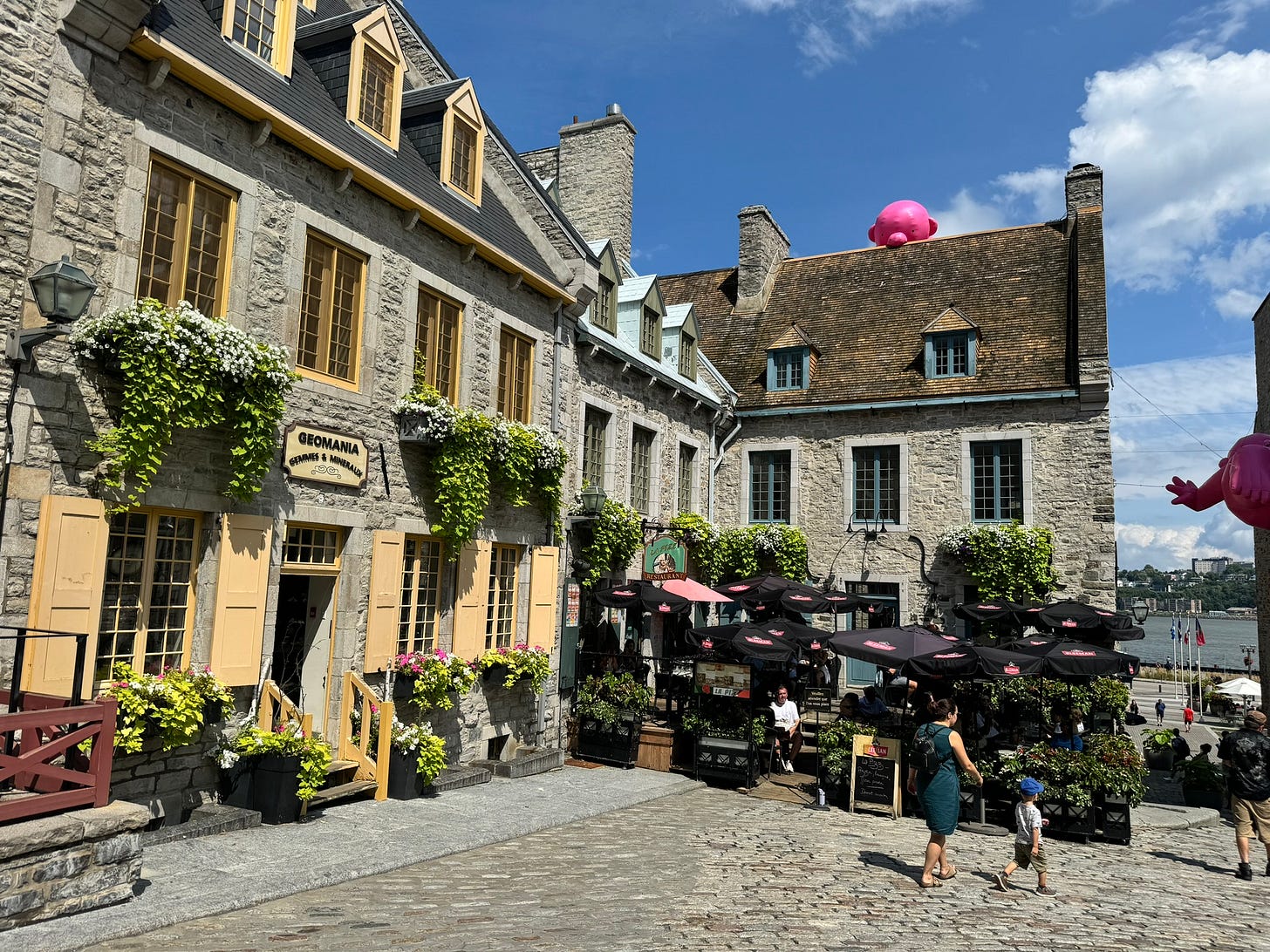
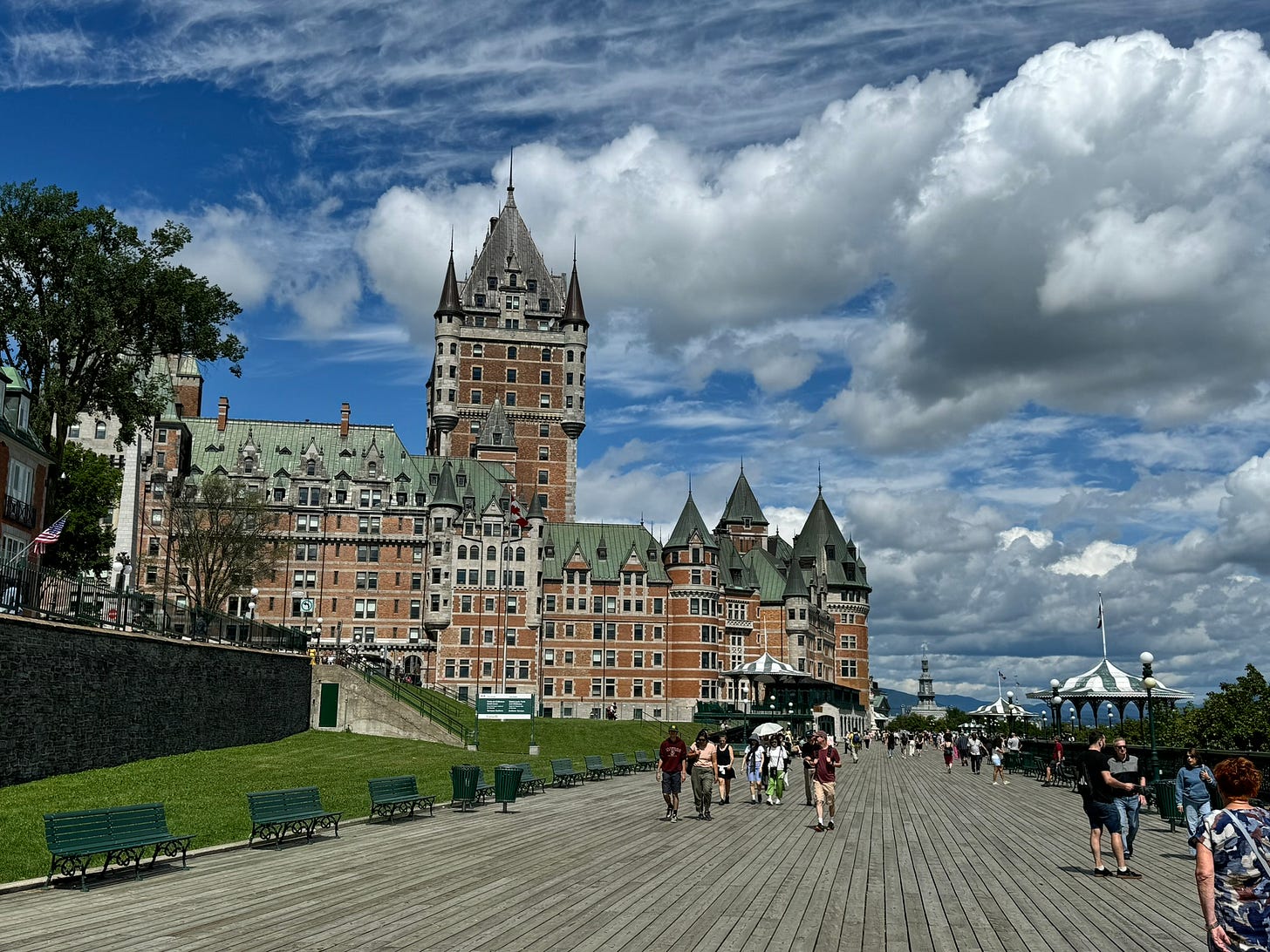
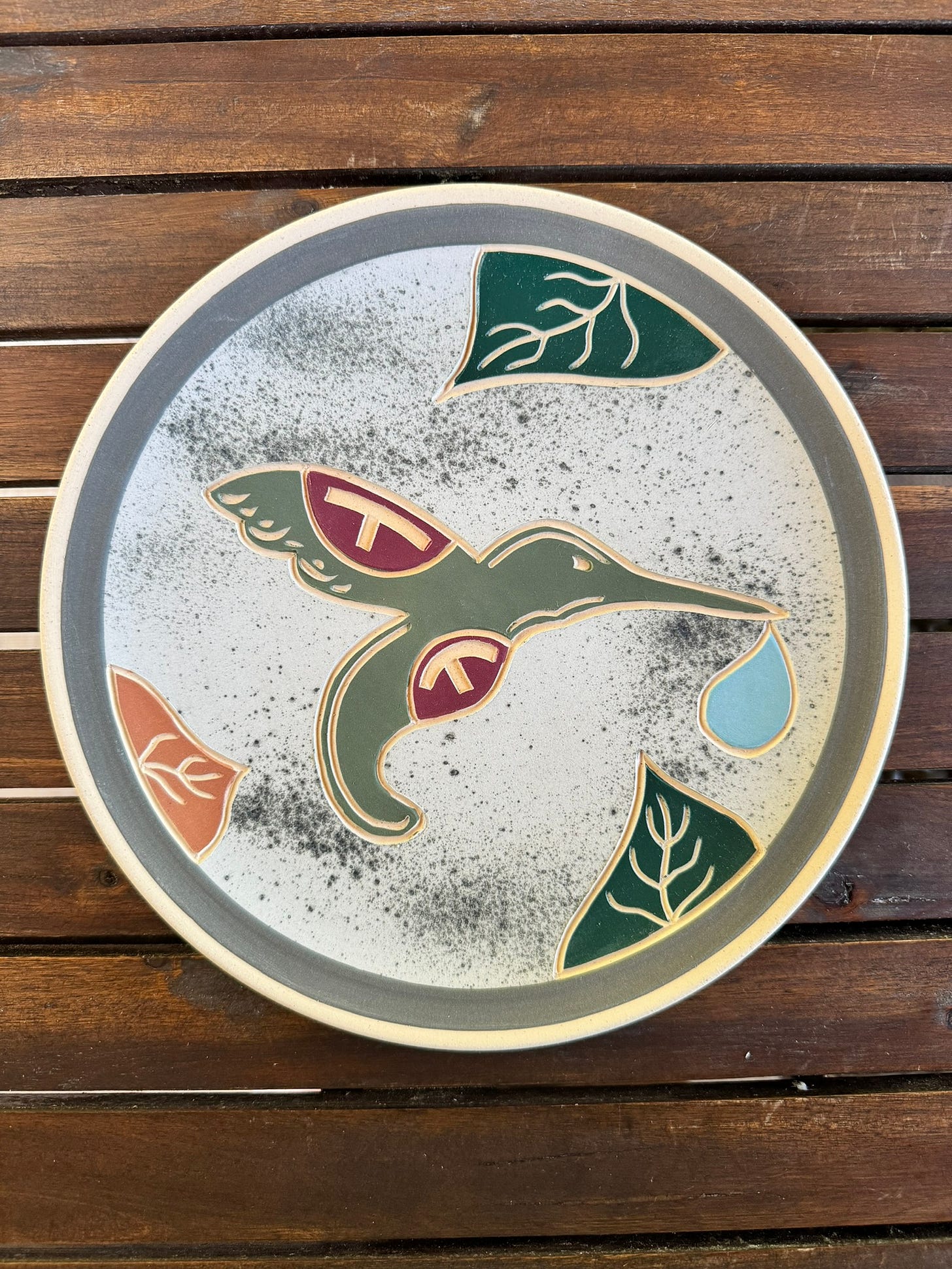
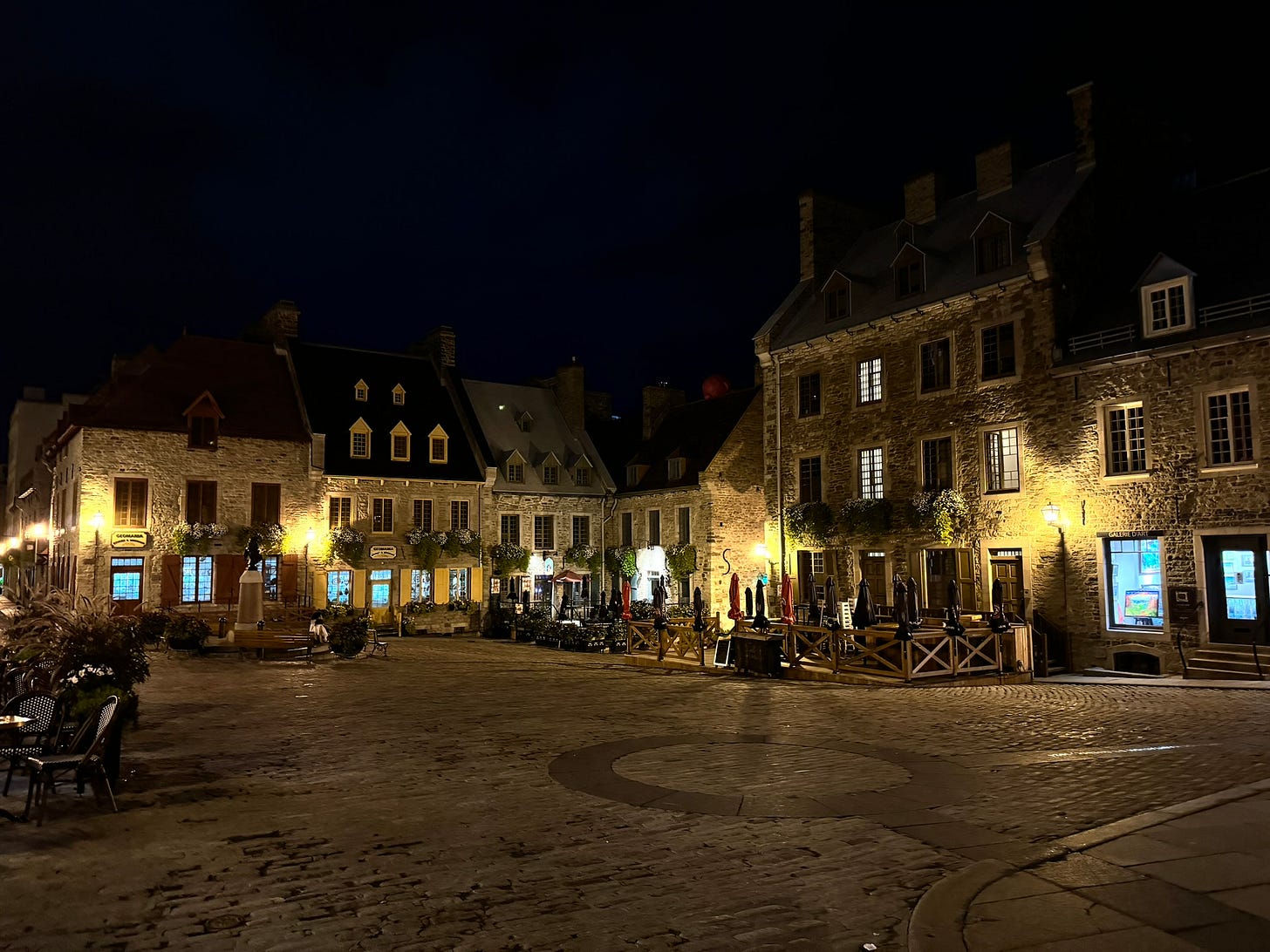
Thanks for this. You know that the hummingbird is special for me.
Love this, especially the hummingbird story. Also, I honestly could probably eat fries with cheese curds for every meal...